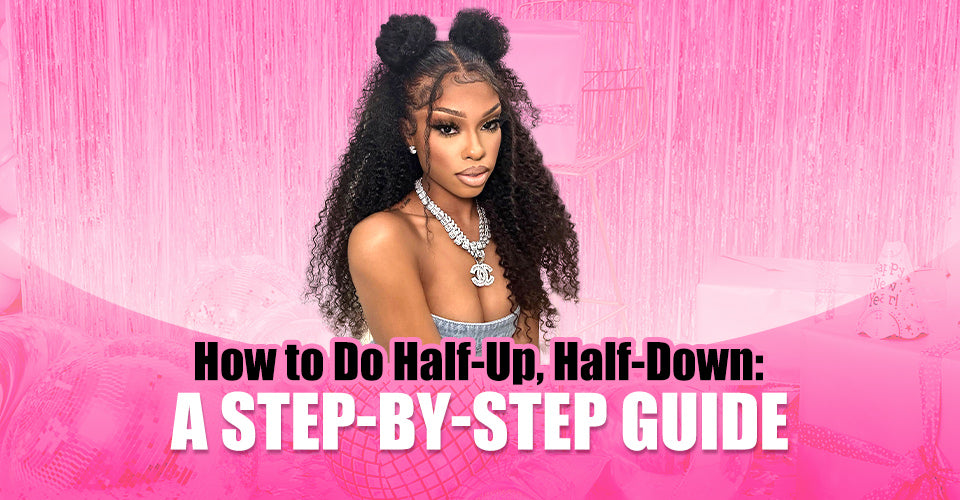Winter can be a challenging season for wig wearers. The cold air outside and heated indoor environments can lead to dryness, static, and frizz—making your wig harder to manage and reducing its lifespan. Whether you’re rocking a human hair wig or a synthetic one, taking extra steps to protect your wig during the colder months is essential. Here's your ultimate guide to keeping your wig smooth, hydrated, and flawless this winter.
1. Moisturize Regularly
Winter air can be particularly drying, so moisturizing is crucial for both human hair and synthetic wigs.
- Human Hair Wigs: Use a lightweight leave-in conditioner or wig-friendly hair oil to keep strands hydrated without weighing them down.
- Synthetic Wigs: Apply a wig-specific conditioning spray to restore moisture and reduce static buildup.
Tip: Avoid over-conditioning, as this can make your wig greasy and harder to style.
2. Combat Static with Anti-Static Products
Static is one of the most common winter wig woes. It occurs when your wig fibers come into contact with dry air or certain fabrics.
- Use an anti-static spray designed for wigs to minimize flyaways.
- A small amount of fabric softener mixed with water can also act as a DIY anti-static solution.
- Store your wig on a wig stand when not in use to prevent static caused by friction.
3. Stay Away from Heat Damage
Winter makes it tempting to use heat tools to tame your wig, especially human hair wigs. However, excessive heat can lead to dryness and breakage.
- Use heat tools sparingly and always apply a heat protectant beforehand.
- For synthetic wigs, avoid heat unless it is specifically labeled as heat-resistant.
4. Wash Wisely
While regular washing is essential for wig maintenance, over-washing in winter can strip away natural oils and hydration.
- Wash your wig every 8–10 wears for synthetic wigs and every 6–8 wears for human hair wigs.
- Use wig-friendly shampoos and conditioners to ensure your wig maintains its quality.
- Always rinse with lukewarm water—hot water can weaken fibers.
5. Humidify Your Environment
Dry indoor heating can exacerbate wig dryness and static. Adding moisture to the air can protect both your wig and natural hair.
- Use a humidifier to maintain an optimal indoor humidity level.
- Place your wig away from direct heat sources like radiators or vents to prevent drying out.
6. Be Mindful of Fabrics
Certain winter fabrics like wool and acrylic can increase static when they come into contact with your wig.
- Opt for silk or satin scarves and caps, which are gentler on your wig and help retain moisture.
- Consider a silk or satin wig liner to reduce friction and protect your wig from sweat.
7. Deep Conditioning for Human Hair Wigs
If you wear human hair wigs, a deep conditioning treatment once a month can restore moisture lost to winter weather.
- Use a high-quality, wig-safe deep conditioner.
- Leave it on for 20–30 minutes, then rinse thoroughly.
8. Store Your Wig Properly
Proper storage is key to maintaining your wig’s health during winter.
- Use a wig stand to help retain its shape and prevent tangling.
- Cover your wig with a satin or silk cover to protect it from dust and dryness.
9. Hydrate Yourself
Don’t forget that your overall hydration plays a role in wig care. Drinking plenty of water keeps your scalp healthy and reduces dryness that can transfer to your wig.
10. Regular Maintenance
Take your wig to a professional stylist for regular touch-ups, especially if you notice signs of wear and tear. They can help revitalize your wig and ensure it looks its best throughout the season.
Conclusion
Winter doesn’t have to be a nightmare for your wig. By taking these steps to prevent dryness and static, you can enjoy a flawless look all season long. With proper care, your wig will remain soft, shiny, and manageable, no matter how cold it gets outside.
Looking for high-quality wigs and wig care products? Explore Reshine Hair’s collection today and discover the difference!



